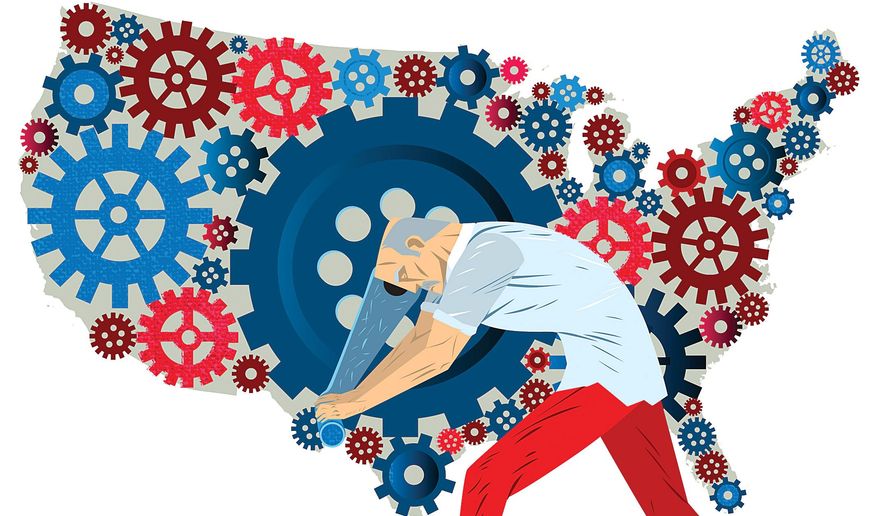OPINION:
Has America entered a “new normal” defined by lower economic growth and declining workforce participation? Some evidence may suggest that is the case, but a closer look reveals it is too soon to make that claim.
The ongoing economic recovery from the recent recession remains about half that of past recoveries. Real gross domestic product growth is lethargic. The percentage of Americans participating in the workforce is the lowest it has been since the late 1970s. It takes almost twice as long for the unemployed to find work than it did before the recession, and those with jobs do not see raises as often as in the past.
The Joint Economic Committee examined declining workforce participation during a recent hearing. To better understand the causes of this decline, committee members investigated how much of the current trend is due to demographics, the economy, social and cultural trends, and federal policies that reduce the incentive to work. The discussion pushed us closer to finding policy solutions to break this trend.
With more and more baby boomers approaching traditional retirement ages, it is easy to ascribe low labor force participation to this particular demographic. However, many baby boomers actually are choosing to stay in the workforce longer and labor force participation rates among Americans age 60 and older are rising. In addition, testimony from Aparna Mathur of the American Enterprise Institute points to a recent decline in workforce participation among younger generations, particularly those in the prime working years. Scott Winship of the Manhattan Institute for Policy Research agreed and added that Americans under age 25 are delaying entry into the workforce as they increasingly choose to focus solely on education.
Since we cannot point fully to America’s aging population, is something else at play?
Federal agencies tracking economic and demographic labor trends did not predict the lasting impact that the recent recession would have on the labor market — a period marked by slower growth, lower productivity and declining entrepreneurship. During the hearing, Ms. Mathur cited reduced job mobility, the decline of middle-skill jobs and decreased job quality as the reasons for the decline. But the sluggish economic recovery is not the sole reason for low workforce participation.
Social and cultural trends affect work participation and have throughout history. There is a rising rate of single-parent families, who typically experience higher poverty rates than two-parent families. These factors contribute to the proportion of Americans presently out of work and merit larger discussions on poverty.
Finally, federal policies can help drive or deter worker participation. Testimony before the Joint Economic Committee revealed that programs put in place by the Obama administration during and after the recession have inadvertently reduced the reward of working. Mr. Winship testified that federal disability benefits “increasingly serve as a shadow long-term unemployment program for able-bodied men who struggle to find work.” While some federal programs have work requirements in place, many are poorly enforced or have been stripped away. Other policies, such as the Affordable Care Act, minimum wage increases and the proposed federal overtime rule change, reduce employment opportunities and hours for workers.
If there are fewer workers in our economy due to a variety of factors, what can Congress do?
Improving our economy overall through tax and regulatory reform is a priority. Early investment in education and job-training skills, including paid apprenticeship programs for young workers still in school, can address some socio-economic trends. As noted by Ms. Mathur, expanding the earned income tax credit or introducing unemployment insurance reform that includes skills training and job matching can open other doors.
An additional solution offered by Mr. Winship is a commission to identify the worst regulations for job and wage growth and to explore the role occupational licensing plays in stunting entrepreneurship. These are all important elements in reinvigorating the reward of work and renewing the American Dream for families that want to participate in the workplace.
To echo Mr. Winship’s words, “The American jobs machine is not fundamentally broken.” Congress can and should act to implement policies to get more Americans working again.
• Sen. Dan Coats, an Indiana Republican, is chairman of the Joint Economic Committee.




Please read our comment policy before commenting.